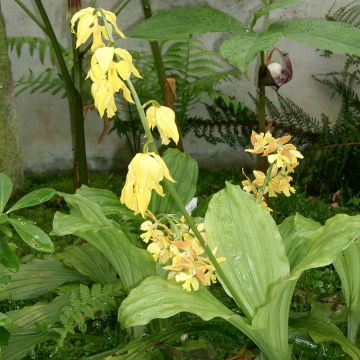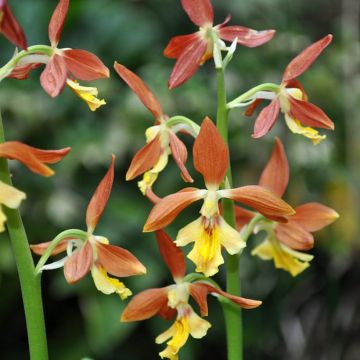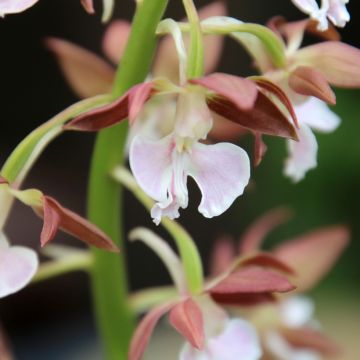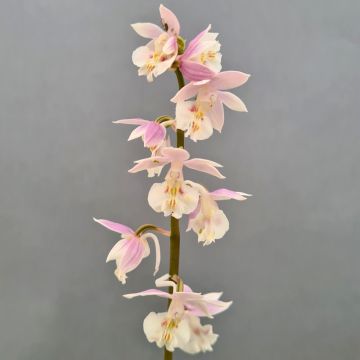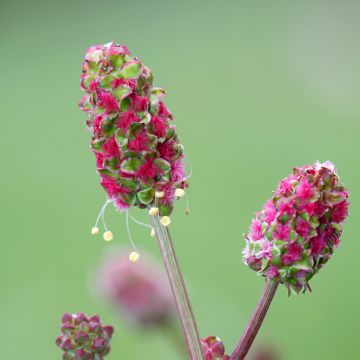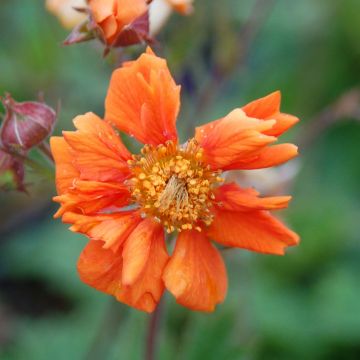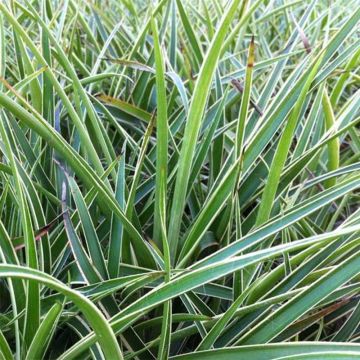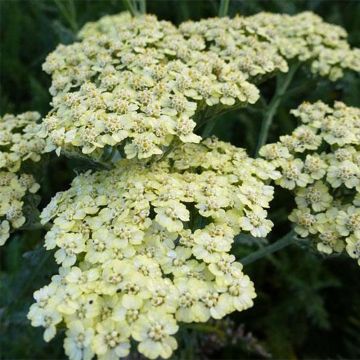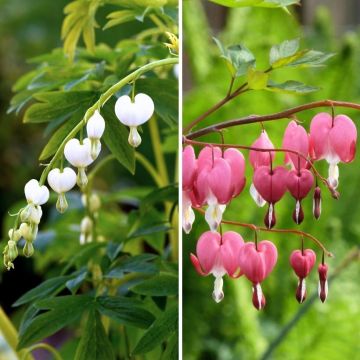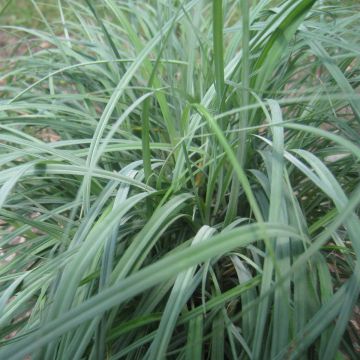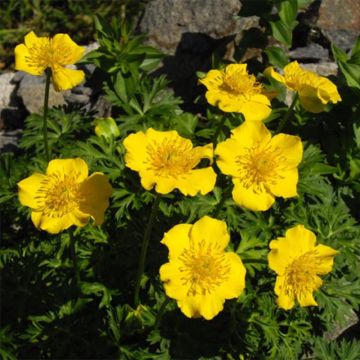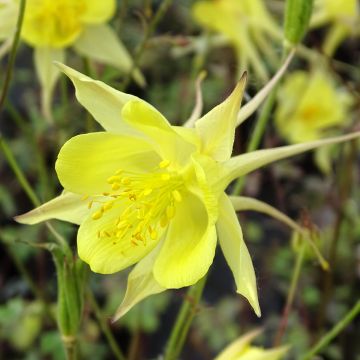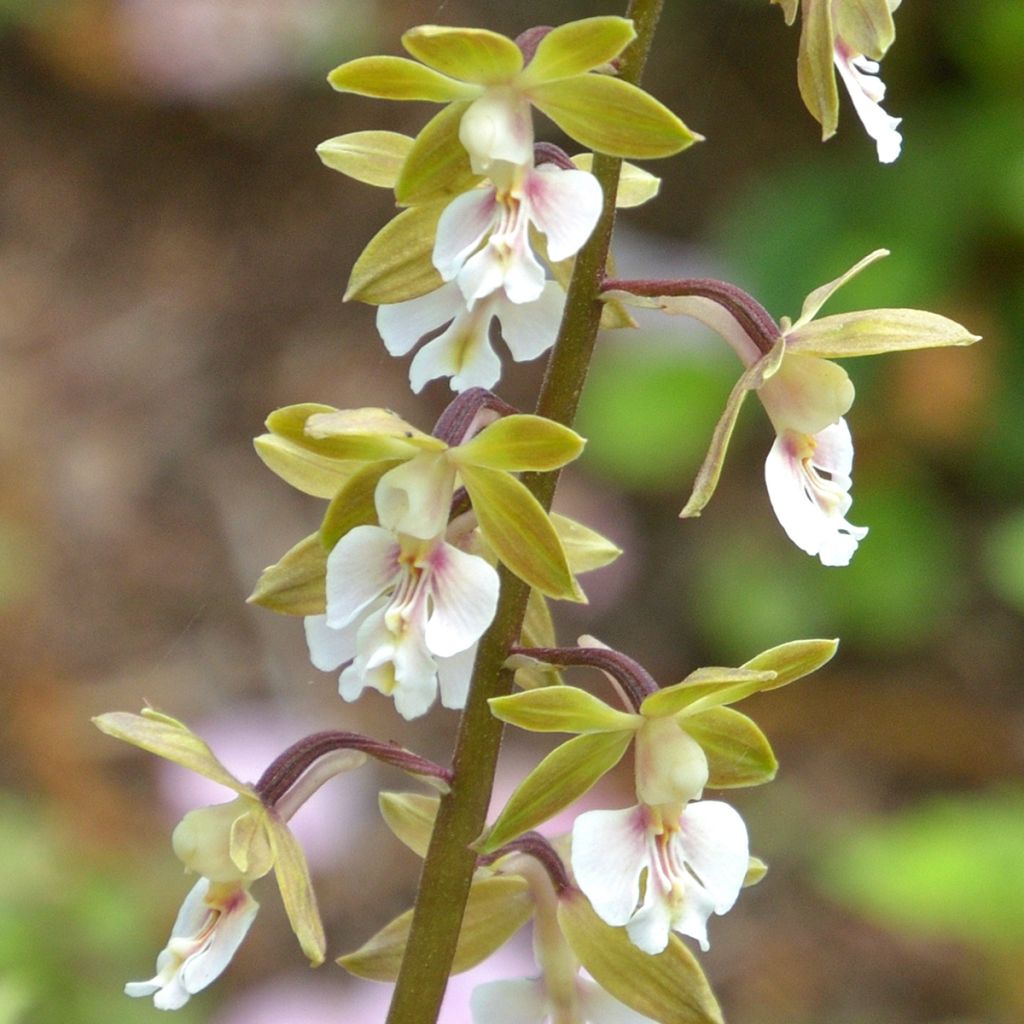

Calanthe Olive Green - Garden orchid
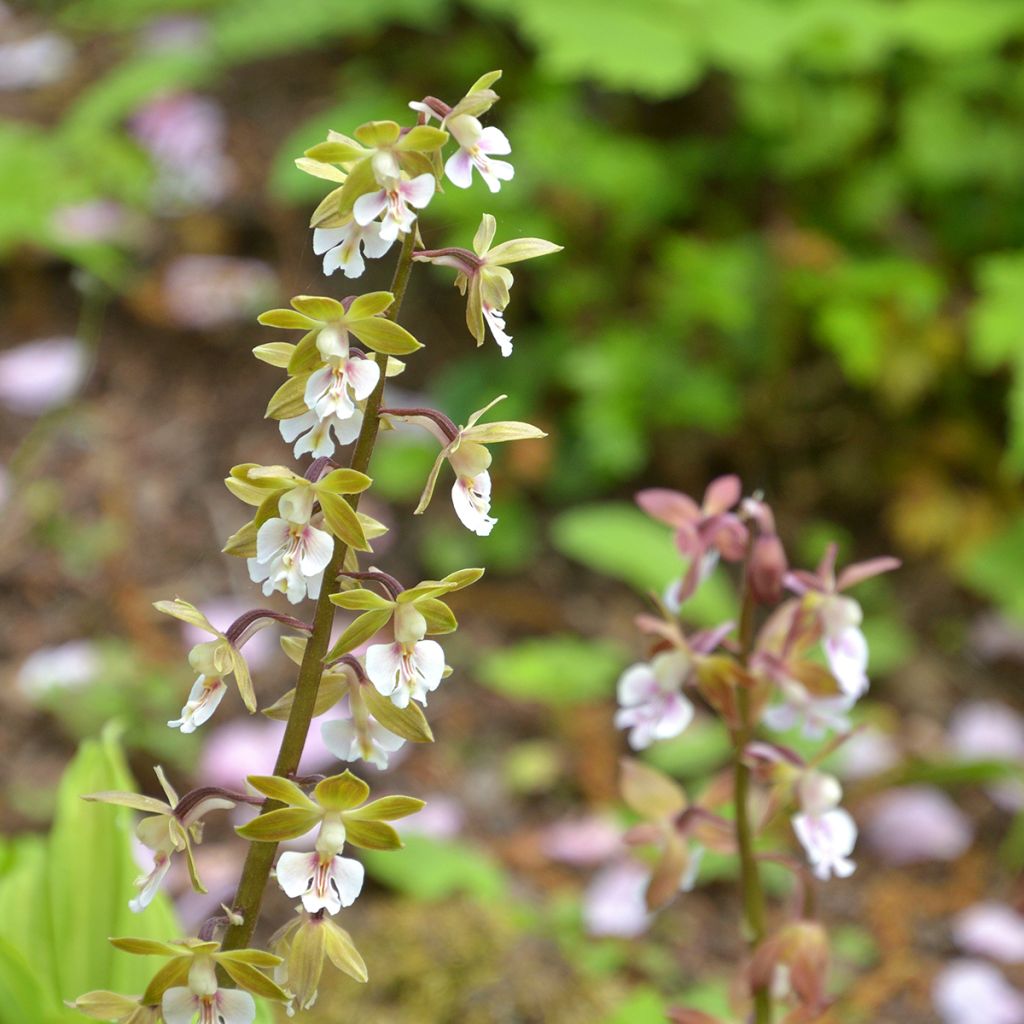

Calanthe Olive Green - Garden orchid
Calanthe Olive Green - Garden orchid
Calanthe x hybrida Olive Green
Garden orchid
This item cannot be shipped to the selected country
Delivery charge from €5.90
More information
Schedule delivery date,
and select date in basket
This plant carries a 12 months recovery warranty
More information
We guarantee the quality of our plants for a full growing cycle, and will replace at our expense any plant that fails to recover under normal climatic and planting conditions.
From €5.90 for pickup delivery and €6.90 for home delivery
Express home delivery from €8.90.
Does this plant fit my garden?
Set up your Plantfit profile →
Description
Calanthe Olive Green is a hybrid variety of terrestrial orchid, rare in cultivation. Olive Green produces a floral stem in spring that bears elegant flowers, an uncommon olive green colour on petals and sepals touched with brown, the lip is pinkish white, marked with light and dark pink, creating a striking contrasting bicolour effect. A deciduous perennial plant with vigorous flowering, it is best cultivated in mild and humid climates, in thick and well-drained humus, remaining moist from spring to the end of summer but rather dry in winter, in partial shade. Growing in pots allows for easier control of the composition and humidity of the growing medium. In winter, in dry soil or substrate, protected by mulch, it can withstand temperatures as low as -10°C (14°F).
Calanthe Olive Green is a hybrid of wild species mainly from the Far East. The deciduous foliage emerges from the ground in spring and dries up in autumn. The plant forms a cluster of foliage, about 40 cm (16in) in all directions. This orchid develops a pseudobulb, from which large light green leaves emerge in early spring, measuring from 15 to 40 cm (6 to 16in) long and 8 to 15 cm (3 to 6in) wide. They are pleated and broadly ovate, with strongly impressed parallel veins. The foliage resembles that of veratrum. In April-May, the plant produces beautiful inflorescences reaching 40 cm (16in) in height, adorned with magnificent bicolour flowers. Each flower consists of 3 sepals and 3 petals, one of which is very different, called the lip. It is often this floral part that is astonishing in orchids. The lip of Olive Green is wide, pleated, pinkish-white marked with light and dark pink, while the other floral parts are olive green and brown. The plant goes dormant in winter when its foliage has completely yellowed.
In favourable climates, plant Calanthe Olive Green in partial shade, sheltered from the wind, in light, humus-rich soils, with a neutral or slightly acidic tendency. Plant it in the shade, in a cool rock garden, between rocks or at the edge of a moist understory, alongside Arisaema, Cypripedium, Paris, Bletilla, and ferns. Due to its average hardiness, it will be necessary to protect the crown from harsh winter conditions and wet. This plant grows well in large pots, which can be overwintered in a cold greenhouse.
When you receive your orchids, handle them with care: these plants produce few roots and are delicate!
Report an error about the product description
Calanthe Olive Green - Garden orchid in pictures
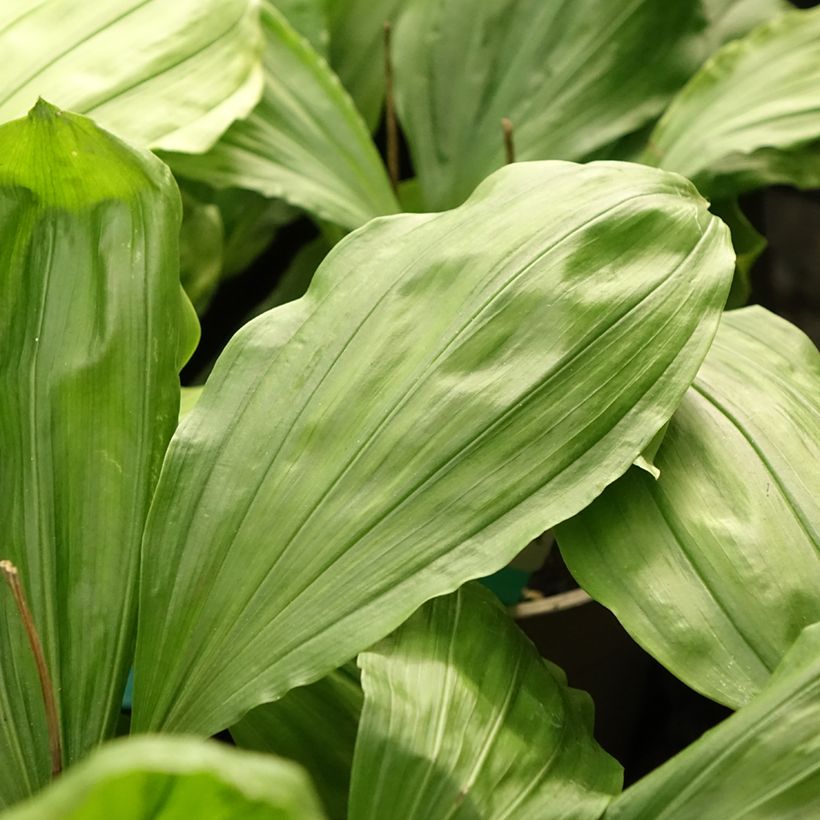

Flowering
Foliage
Plant habit
Botanical data
Calanthe
x hybrida
Olive Green
Orchidaceae
Garden orchid
Cultivar or hybrid
Other Calanthe
Planting and care
Calanthe Olive Green likes protected environments, semi-shade, thick and airy humus in the undergrowth, light soil, moderately moist soil from spring to the end of summer, drier in winter. In case of winter wet, the rootstock will rot, especially if there are significant frosts. Plant in semi-shade, at the edge of large trees, with west being the best exposure. In heavy soil, add 1/3 leaf compost and 1/3 non-chalky gravel mixed with your topsoil to a depth and width of 40 cm (16in). In regions with cold winters, protection is essential against the cold and wet. Place a 20 cm (8in) layer of leaves or crushed bark on the crown, and, if necessary, an impermeable cover on top of this.
Growing in pots or planters is possible, in a mixture of 60% ericaceous soil, 20% horticultural compost, and 20% coarse sand. Terrestrial calanthes are quite hungry plants during the growing season: a weekly application of geranium-type fertilizer at half the recommended dose from mid-May to mid-September will be beneficial.
Planting period
Intended location
Care
This item has not been reviewed yet - be the first to leave a review about it.
Spring flowering perennials
Haven't found what you were looking for?
Hardiness is the lowest winter temperature a plant can endure without suffering serious damage or even dying. However, hardiness is affected by location (a sheltered area, such as a patio), protection (winter cover) and soil type (hardiness is improved by well-drained soil).

Photo Sharing Terms & Conditions
In order to encourage gardeners to interact and share their experiences, Promesse de fleurs offers various media enabling content to be uploaded onto its Site - in particular via the ‘Photo sharing’ module.
The User agrees to refrain from:
- Posting any content that is illegal, prejudicial, insulting, racist, inciteful to hatred, revisionist, contrary to public decency, that infringes on privacy or on the privacy rights of third parties, in particular the publicity rights of persons and goods, intellectual property rights, or the right to privacy.
- Submitting content on behalf of a third party;
- Impersonate the identity of a third party and/or publish any personal information about a third party;
In general, the User undertakes to refrain from any unethical behaviour.
All Content (in particular text, comments, files, images, photos, videos, creative works, etc.), which may be subject to property or intellectual property rights, image or other private rights, shall remain the property of the User, subject to the limited rights granted by the terms of the licence granted by Promesse de fleurs as stated below. Users are at liberty to publish or not to publish such Content on the Site, notably via the ‘Photo Sharing’ facility, and accept that this Content shall be made public and freely accessible, notably on the Internet.
Users further acknowledge, undertake to have ,and guarantee that they hold all necessary rights and permissions to publish such material on the Site, in particular with regard to the legislation in force pertaining to any privacy, property, intellectual property, image, or contractual rights, or rights of any other nature. By publishing such Content on the Site, Users acknowledge accepting full liability as publishers of the Content within the meaning of the law, and grant Promesse de fleurs, free of charge, an inclusive, worldwide licence for the said Content for the entire duration of its publication, including all reproduction, representation, up/downloading, displaying, performing, transmission, and storage rights.
Users also grant permission for their name to be linked to the Content and accept that this link may not always be made available.
By engaging in posting material, Users consent to their Content becoming automatically accessible on the Internet, in particular on other sites and/or blogs and/or web pages of the Promesse de fleurs site, including in particular social pages and the Promesse de fleurs catalogue.
Users may secure the removal of entrusted content free of charge by issuing a simple request via our contact form.
The flowering period indicated on our website applies to countries and regions located in USDA zone 8 (France, the United Kingdom, Ireland, the Netherlands, etc.)
It will vary according to where you live:
- In zones 9 to 10 (Italy, Spain, Greece, etc.), flowering will occur about 2 to 4 weeks earlier.
- In zones 6 to 7 (Germany, Poland, Slovenia, and lower mountainous regions), flowering will be delayed by 2 to 3 weeks.
- In zone 5 (Central Europe, Scandinavia), blooming will be delayed by 3 to 5 weeks.
In temperate climates, pruning of spring-flowering shrubs (forsythia, spireas, etc.) should be done just after flowering.
Pruning of summer-flowering shrubs (Indian Lilac, Perovskia, etc.) can be done in winter or spring.
In cold regions as well as with frost-sensitive plants, avoid pruning too early when severe frosts may still occur.
The planting period indicated on our website applies to countries and regions located in USDA zone 8 (France, United Kingdom, Ireland, Netherlands).
It will vary according to where you live:
- In Mediterranean zones (Marseille, Madrid, Milan, etc.), autumn and winter are the best planting periods.
- In continental zones (Strasbourg, Munich, Vienna, etc.), delay planting by 2 to 3 weeks in spring and bring it forward by 2 to 4 weeks in autumn.
- In mountainous regions (the Alps, Pyrenees, Carpathians, etc.), it is best to plant in late spring (May-June) or late summer (August-September).
The harvesting period indicated on our website applies to countries and regions in USDA zone 8 (France, England, Ireland, the Netherlands).
In colder areas (Scandinavia, Poland, Austria...) fruit and vegetable harvests are likely to be delayed by 3-4 weeks.
In warmer areas (Italy, Spain, Greece, etc.), harvesting will probably take place earlier, depending on weather conditions.
The sowing periods indicated on our website apply to countries and regions within USDA Zone 8 (France, UK, Ireland, Netherlands).
In colder areas (Scandinavia, Poland, Austria...), delay any outdoor sowing by 3-4 weeks, or sow under glass.
In warmer climes (Italy, Spain, Greece, etc.), bring outdoor sowing forward by a few weeks.

































